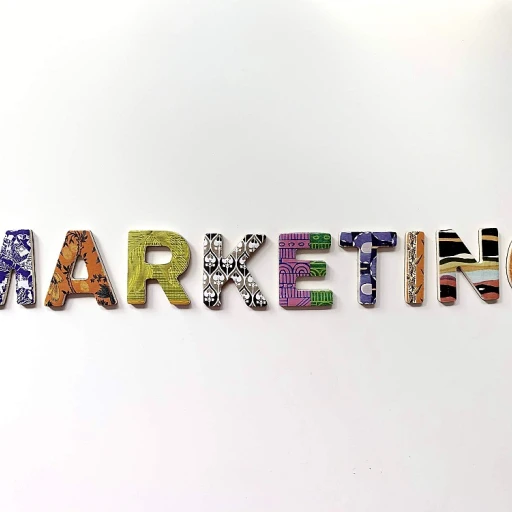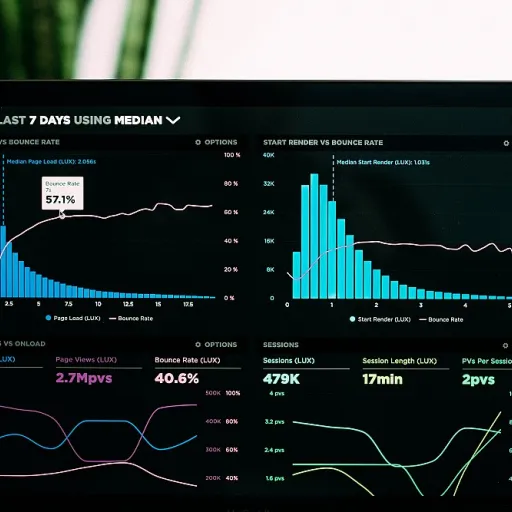
Defining abm and pbm in the context of SEO
What Sets Account-Based and People-Based Approaches Apart in SEO?
In the evolving world of search engine optimisation, two strategies have gained significant attention: account-based marketing (ABM) and people-based marketing (PBM). Both aim to improve marketing and sales outcomes, but they differ in how they target and engage audiences. Understanding these differences is essential for companies looking to refine their SEO and digital marketing strategy.
- Account-Based Marketing (ABM): ABM focuses on targeting specific companies or accounts. The approach is highly personalised, aiming to reach decision makers and buying committees within those organisations. ABM uses data to identify high-value accounts, then tailors content, ads, and outreach to address the unique needs of each account. This strategy is especially effective for B2B companies with longer sales cycles and complex buying groups.
- People-Based Marketing (PBM): PBM, sometimes called person-based or persona-based marketing, shifts the focus from accounts to individual people. It leverages data at the contact level to create detailed buyer personas, allowing for more personalised and relevant content. PBM is about reaching the right person, at the right time, with the right message—regardless of which company they work for. This approach is valuable for both B2B and B2C brands seeking to engage a target audience across multiple channels.
Both ABM and PBM rely on data-driven insights to identify and engage their audiences. However, while ABM is centred on account level targeting, PBM is all about the individual. These differences impact how companies approach content creation, level advertising, and sales marketing alignment.
As artificial intelligence becomes more integrated into SEO, it enhances both ABM and PBM by enabling more precise audience segmentation, personalised content, and data analysis. For a deeper dive into how AI-driven SEO leverages referral sources to improve targeting and engagement, explore this resource on the role of referral sources in AI-driven SEO.
Understanding the core distinctions between account based and people based strategies is the foundation for building a marketing strategy that aligns with your business goals and target audience. As we move forward, the integration of AI will continue to shape how these approaches are implemented and optimised for better results.
How artificial intelligence enhances abm and pbm
AI-driven personalization for account and people based marketing
Artificial intelligence is transforming how companies approach both account based marketing (ABM) and people based marketing (PBM) in search engine optimization. By leveraging advanced data analysis, AI enables marketers to move beyond traditional ABM and PBM strategies, making it possible to deliver highly personalized content and ads to the right audience at the right time.
- Data-driven targeting: AI can process large volumes of data from various sources, identifying patterns in buyer persona behavior, decision makers, and buying groups. This allows for more precise level targeting, whether at the account, contact, or persona level.
- Content optimization: AI tools can analyze which types of content resonate with specific audiences, helping marketers create personalized messages for each target audience. This is especially useful for both account based and people based strategies, as it ensures the right message reaches the right person or buying committee.
- Automated segmentation: AI can segment audiences based on their behavior, interests, and stage in the buying journey. This supports both ABM and PBM by enabling marketers to tailor their marketing strategy and ads for each segment, increasing engagement and conversion rates.
- Predictive analytics: AI-powered predictive analytics help companies anticipate which accounts or individuals are most likely to convert. This allows for smarter allocation of sales and marketing resources, focusing efforts on high-value targets.
Enhancing sales and marketing alignment
AI bridges the gap between sales and marketing teams by providing actionable insights at both the account and person level. With real-time data, teams can coordinate their efforts, ensuring that both ABM and PBM strategies are aligned with the needs of the target audience and buying committee. This alignment leads to more effective campaigns and a higher return on investment.
AI-powered tools for better audience understanding
Modern AI tools help marketers understand the complex dynamics of buying groups and committees. By analyzing interactions across multiple channels, AI can map out the roles and influence of each person involved in the decision-making process. This deep understanding is crucial for both account based and people based marketing, as it informs the creation of personalized content and level advertising strategies.
For a practical example of how AI can enhance local SEO strategies and attract more targeted customers, you can read about how local SEO can help chiropractors attract more patients.
Key differences between abm and pbm for SEO
Comparing Targeting Approaches: Account vs. People
When it comes to SEO strategies, the distinction between account based marketing (abm) and people based marketing (pbm) is rooted in how each approach defines and reaches its target audience. Account based focuses on specific companies or organizations, tailoring content and campaigns to engage key decision makers within those accounts. In contrast, people based marketing zeroes in on individuals, often building detailed buyer personas and targeting at the contact level, regardless of the company they belong to.
Personalization and Content Delivery
Artificial intelligence is transforming both abm and pbm by enabling more personalized content and ads. In abm, AI analyzes data from multiple sources to identify the most relevant buying groups and personalize messaging for each account. For pbm, AI helps build comprehensive customer profiles, allowing for highly personalized content and level advertising that speaks directly to the needs and behaviors of each person or persona. This distinction means that abm strategies often focus on the collective needs of a buying committee, while pbm hones in on individual motivations and behaviors.
Data Utilization and Measurement
Another key difference lies in how data is used. Abm relies on company-level data, such as firmographics and account engagement metrics, to inform marketing strategy and sales outreach. PbM, on the other hand, leverages contact-level data, tracking individual interactions across channels to optimize people based advertising and content. This impacts how success is measured: abm often looks at account penetration and influence within target companies, while pbm measures engagement and conversion at the person level.
Scalability and Complexity
Abm can be resource-intensive, as it requires deep research and personalized campaigns for each account. PbM, with the help of AI, can scale more efficiently by automating persona based targeting and content generation for large audiences. However, both approaches benefit from AI’s ability to process large volumes of data and identify patterns that inform more effective marketing pbm and abm pbm strategies.
SEO Impact: Which Approach Fits?
The choice between abm and pbm for SEO depends on your business goals and target audience. Companies selling to large organizations with complex buying groups may find account based strategies more effective, while those targeting individual decision makers or niche personas might prefer people based tactics. For a deeper look at how AI is used in industry-specific SEO, check out this case study on AI-powered travel SEO.
- Abm: Focuses on account level targeting, buying committees, and company-wide influence.
- Pbm: Prioritizes contact level personalization, buyer persona insights, and individual engagement.
Challenges of implementing AI in abm and pbm strategies
Complexity of Data Integration and Quality
One of the main challenges when using artificial intelligence in account based marketing (abm) and people based marketing (pbm) strategies is managing the vast amount of data required. Both approaches depend on high-quality, up-to-date information about target accounts, buying groups, and individual personas. AI systems need to integrate data from multiple sources, such as CRM platforms, website analytics, and third-party databases. Inconsistent or incomplete data can lead to inaccurate audience segmentation and ineffective personalized content, making it harder to reach decision makers and the right buying committee.
Balancing Personalization and Privacy
AI enables highly personalized marketing and advertising at the account or contact level, but this raises privacy concerns. Regulations like GDPR and CCPA require companies to handle customer data responsibly. Striking the right balance between delivering personalized ads and respecting user privacy is a constant challenge for both abm and pbm strategies. Overly aggressive data collection or targeting can damage trust and harm the brand’s reputation.
Resource Demands and Technical Expertise
Implementing AI-driven abm pbm strategies often requires significant investment in technology and skilled personnel. Companies need expertise in data science, machine learning, and digital marketing to set up and maintain these systems. Smaller businesses may struggle to compete with larger organizations that have more resources for advanced marketing pbm and account based advertising solutions.
Alignment Between Sales and Marketing Teams
For AI to be effective in abm and pbm, sales and marketing teams must collaborate closely. AI can identify target audience segments and suggest personalized content, but without alignment on buyer persona definitions, level targeting, and marketing strategy, efforts may be duplicated or misdirected. Ensuring both teams work together is essential for maximizing the impact of AI on buying group engagement and sales outcomes.
Continuous Optimization and Measurement
AI-driven strategies require ongoing monitoring and adjustment. The algorithms powering person based and account based marketing need regular feedback to improve targeting and content recommendations. Measuring the effectiveness of AI in reaching the right audience, influencing the buying process, and driving sales is complex, especially when multiple touchpoints and channels are involved. Companies must invest in robust analytics to track performance and refine their approach over time.
Best practices for leveraging AI in abm and pbm
Building Effective AI-Driven Workflows
To get the most out of artificial intelligence in both account based marketing (abm) and people based marketing (pbm), companies need to focus on building workflows that combine data, technology, and human insight. AI can help marketers identify the right target audience, segment buying groups, and personalize content for each buyer persona. But the real value comes from integrating AI tools with your existing marketing strategy and sales processes.
- Start with clean, structured data: AI models rely on accurate data about accounts, contacts, and buying committees. Make sure your CRM and marketing platforms are up to date and well integrated.
- Define clear buyer personas: Use AI to analyze customer data and refine your understanding of decision makers and buying groups. This helps tailor content and ads at the account or person level.
- Personalize at scale: AI can automate the creation of personalized messages, content, and ads for both abm and pbm campaigns. Leverage machine learning to adjust messaging based on engagement and behavior.
- Align sales and marketing: AI insights should be shared across teams. For example, sales can use AI-driven signals to prioritize outreach to high-value accounts or contacts showing buying intent.
- Monitor and optimize: Continuously track performance of AI-powered campaigns. Use analytics to refine targeting, content, and level advertising strategies.
Choosing the Right Tools and Platforms
Not all AI solutions are created equal. Look for platforms that support both account based and people based approaches, offer robust data integration, and provide actionable insights. Some tools specialize in account based targeting, while others excel at contact level personalization. Evaluate your needs based on your marketing pbm or abm pbm focus, and consider how each tool fits into your overall marketing strategy.
Ensuring Data Privacy and Compliance
With AI handling more customer and audience data, privacy and compliance are critical. Make sure your AI-powered campaigns respect data regulations and customer preferences. This builds trust with your target audience and protects your brand reputation.
Encouraging Cross-Functional Collaboration
AI works best when marketing, sales, and data teams collaborate. Encourage regular communication to ensure AI insights are used effectively, whether you’re running traditional abm, persona based campaigns, or people based advertising. This helps maximize ROI and ensures your AI investments support both sales marketing and customer engagement goals.
Future trends: AI’s evolving role in abm vs pbm for SEO
Emerging AI Technologies Reshaping Targeting and Personalization
Artificial intelligence is rapidly transforming how companies approach account based marketing (abm) and people based marketing (pbm) within SEO strategies. As AI tools become more sophisticated, they enable marketers to analyze vast amounts of data, identify buyer personas, and understand the dynamics of buying groups and committees. This evolution is pushing the boundaries of traditional abm and pbm by allowing for more precise audience segmentation and content personalization at both the account and contact level.
Greater Integration of Data Sources for Enhanced Decision Making
One of the most significant trends is the integration of multiple data sources. AI-driven platforms can now combine behavioral, demographic, and firmographic data to create a comprehensive view of the target audience. This holistic approach helps marketing and sales teams identify decision makers within buying committees and tailor content and ads to their specific needs. The result is a more effective marketing strategy that aligns with the expectations of both account based and persona based approaches.
Automation and Real-Time Optimization
AI is also driving automation in campaign management, enabling real-time adjustments to level targeting and based advertising. Marketers can now deploy personalized ads and content to specific accounts or individuals, optimizing for engagement and conversion as new data comes in. This level of agility is especially valuable for companies targeting complex buying groups or multiple personas within an organization.
Personalized Content at Scale
With advancements in natural language processing and machine learning, AI can generate and recommend content that resonates with each segment of the target audience. Whether the focus is on abm pbm or a hybrid approach, marketers can deliver relevant messaging to every person involved in the buying process, from initial contact to final decision makers. This helps build trust and authority, key elements for successful sales marketing outcomes.
Ethical Considerations and Privacy
As AI becomes more embedded in marketing pbm and abm strategies, companies must address ethical concerns around data usage and privacy. Ensuring transparency and compliance with regulations is essential for maintaining customer trust, especially when leveraging contact level data for personalized campaigns.
- AI enables deeper insights into buyer personas and buying committees
- Real-time data analysis supports dynamic content and ad optimization
- Ethical data practices are crucial for sustainable marketing strategies
Looking ahead, the role of AI in account based and people based marketing will continue to expand, offering new opportunities for companies to connect with their target audience in meaningful ways. Staying informed about these trends will be key for marketers aiming to maintain a competitive edge in SEO and digital marketing.













